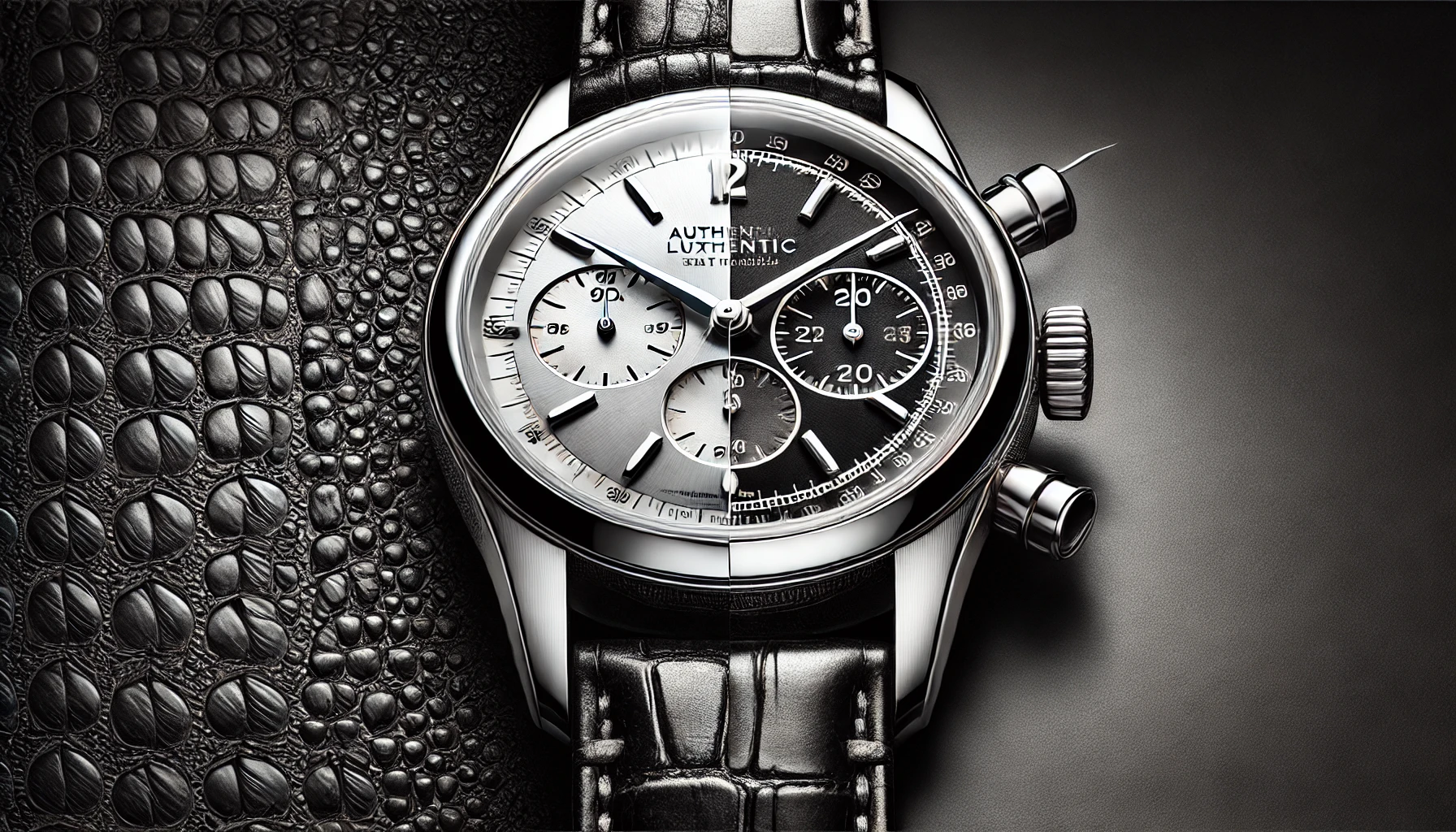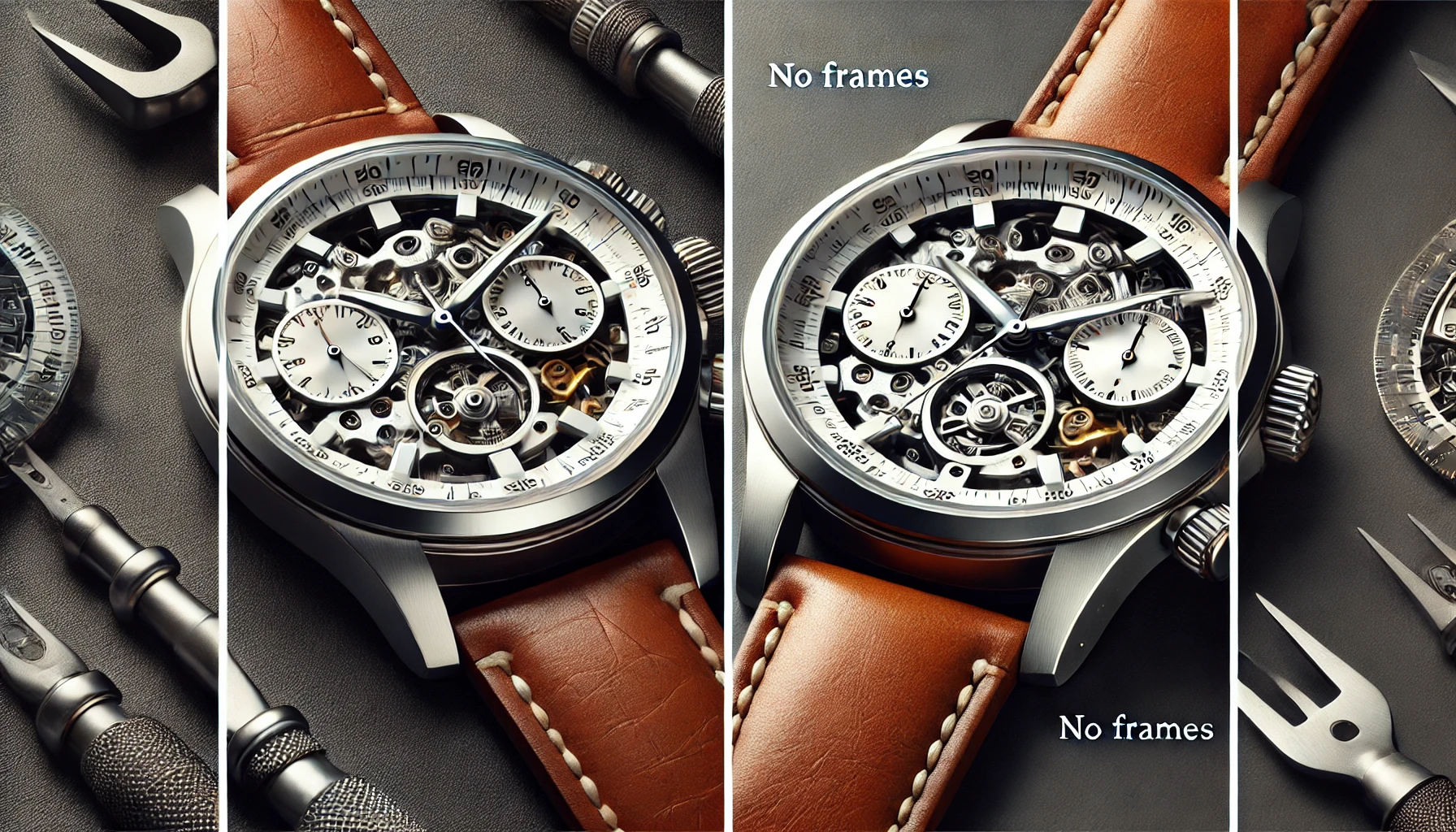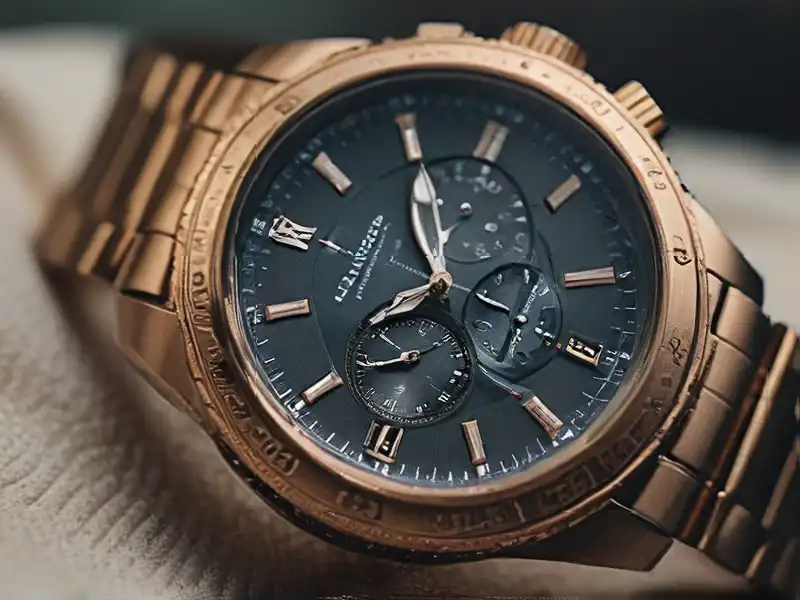Replica watches have long been a subject of interest and discussion among watch enthusiasts and collectors. Some argue that replicas offer an affordable alternative to luxury timepieces, but the truth is that there are significant differences between genuine luxury watches and their fake counterparts. One of the most important aspects where these differences become apparent is in the quality of the materials used. This comprehensive guide will explore the key differences in material quality between authentic and replica watches, helping you understand why genuine watches command higher prices and provide unparalleled quality.

Materials and Manufacturing Quality
Authentic Watches: A Benchmark of Excellence
Luxury watch brands are renowned for their commitment to quality and craftsmanship. The materials used in the production of authentic watches are of the highest standard, contributing to the durability, functionality, and aesthetic appeal of these timepieces.
High-Quality Materials:
Stainless Steel: Authentic luxury watches often use 316L or 904L stainless steel. These grades of stainless steel are known for their superior resistance to corrosion and their ability to maintain a polished finish over time.
Sapphire Crystal: The watch face of an authentic luxury watch is typically made from sapphire crystal. This material is highly scratch-resistant, ensuring that the watch face remains clear and unmarred even with regular use.
Genuine Precious Metals: Brands like Rolex, Patek Philippe, and Jaeger-LeCoultre use real gold, platinum, and other precious metals in their watches. These materials not only add to the watch's aesthetic value but also its intrinsic value.
Leather and Exotic Skins: High-end brands use genuine leather and exotic skins such as alligator, crocodile, and ostrich for their straps. These materials are selected for their durability and luxurious feel.
Precision Engineering and Skilled Craftsmanship:
Meticulous Assembly: Authentic watches are assembled by skilled watchmakers who ensure that every component fits together perfectly. The assembly process involves precision engineering, with each part designed to work in harmony with the others.
Flawless Finish: The finishing touches on an authentic watch are impeccable. Every edge is polished, every surface is smooth, and there are no visible flaws or imperfections.
Investment in Technology: Luxury watch brands invest heavily in their manufacturing capabilities. They use advanced technology and techniques to ensure that each watch meets the highest standards of quality.
Replica Watches: Compromises in Quality
Replica watches, on the other hand, are designed to mimic the appearance of luxury watches without the associated costs. This often means significant compromises in the materials used and the manufacturing processes employed.
Cheaper, Lower-Quality Materials:
Base Metals: Instead of high-grade stainless steel, replicas often use cheaper base metals that can corrode and tarnish over time.
Mineral Crystals: The watch face on a replica is typically made from mineral crystal, which is more prone to scratches and can appear hazy.
Plated Metals: Replica watches may use gold or silver plating instead of solid precious metals. These coatings can wear off, revealing the base metal beneath.
Synthetic Materials: For straps, replicas might use synthetic leather or low-quality rubber instead of genuine leather or exotic skins.
Imprecise Manufacturing Processes:
Inferior Assembly: The components of a replica watch may not fit together as seamlessly as those of an authentic watch. This can result in gaps, misalignments, and a generally less polished appearance.
Visible Flaws: The finishing on a replica watch is often inferior, with visible flaws and imperfections. This can include rough edges, uneven surfaces, and inconsistent detailing.
Lack of Expertise: Replica manufacturers do not have access to the same level of expertise and technology as luxury watch brands. This results in watches that Weight and Heft
The Significance of Weight in Authentic Watches
One of the distinguishing features of authentic luxury watches is their weight. The use of high-quality materials and precision engineering results in a watch that feels substantial and balanced on the wrist.
Substantial Weight:
Premium Materials: The use of solid stainless steel, sapphire crystal, and precious metals adds to the heft of an authentic watch. These materials are denser and heavier than the base metals and mineral crystals used in replicas.
Robust Construction: The meticulous assembly and robust construction of authentic watches contribute to their weight. Every component is designed to add to the overall durability and reliability of the watch.
Balanced Heft:
Comfort and Wearability: The balanced heft of an authentic watch makes it comfortable to wear. It feels secure on the wrist, and the weight distribution ensures that it does not shift or slide around.
Perception of Quality: The substantial weight of an authentic watch enhances the perception of quality. It gives the wearer confidence that they are wearing a well-crafted, high-quality timepiece.
The Lightweight Nature of Replica Watches
In contrast, replica watches often feel noticeably lighter. This is primarily due to the use of cheaper, less dense materials and less rigorous construction methods.
Lighter Components:
Base Metals and Mineral Crystals: The use of base metals and mineral crystals results in a watch that feels lighter and less substantial.
Plated Metals: The thin layers of plating used on replicas do not add significant weight, contributing to the overall lightness of the watch.
Imbalanced Heft:
Uncomfortable Fit: The lighter weight and imbalanced heft of a replica watch can make it less comfortable to wear. It may shift or move around on the wrist, detracting from the overall wearability.
Perception of Inferiority: The lightweight nature of a replica watch can give the impression of a lower-quality product. It may not inspire the same confidence as an authentic watch.
Crystal and Date Window Quality
Crystal Quality in Authentic Watches
The quality of the watch crystal is another area where authentic watches stand out. The crystal is a crucial component, protecting the watch face and ensuring clear visibility of the time.
Sapphire Crystal:
Scratch Resistance: Authentic watches typically use sapphire crystal, known for its exceptional hardness and scratch resistance. This ensures that the watch face remains clear and unmarred even after years of use.
Clarity: Sapphire crystal offers superior clarity, allowing for easy reading of the watch face under various lighting conditions. It does not haze or discolor over time.
Date Window Precision:
Cyclops Magnification: Many luxury watches feature a cyclops magnification over the date window. This magnification is precisely calibrated to enhance readability without distortion.
Alignment and Finish: The date window on an authentic watch is meticulously crafted, with perfect alignment and a polished finish that complements the overall design of the watch.
Inferior Crystal and Date Window in Replica Watches
Replica watches often use lower-quality materials for the crystal and date window, resulting in a noticeable difference in performance and appearance.
Mineral Crystal:
Prone to Scratches: The mineral crystal used in replicas is more susceptible to scratches and damage. Over time, this can lead to a hazy or scratched watch face that impairs visibility.
Inferior Clarity: Mineral crystal does not offer the same level of clarity as sapphire crystal. It can appear dull or discolored, detracting from the overall aesthetic of the watch.
Date Window Issues:
Imprecise Magnification: The cyclops magnification on a replica watch may be less precise, resulting in distorted or unclear date readings.
Misalignment and Flaws: The date window on a replica watch may be misaligned or poorly finished. This can include rough edges, uneven magnification, and visible imperfections.

Conclusion
In summary, the key differences in the quality of materials between authentic and replica watches are evident in the materials used, the manufacturing processes, and the overall attention to detail. Authentic luxury watches are crafted from high-quality materials, assembled with precision, and finished to perfection, resulting in a timepiece that offers superior performance, durability, and aesthetic appeal. Replica watches, while often visually similar, fall short in terms of material quality, construction, and finishing, making them a less desirable choice for discerning watch enthusiasts.
At Replica Watch, our mission is to provide you with the knowledge and insights needed to make informed decisions when it comes to purchasing and owning watches. Whether you are considering an authentic luxury watch or exploring replica options, understanding the differences in material quality is crucial. Explore our website for more articles, guides, and updates to stay ahead in the world of watches.
Thank you for joining us on this journey to uncover the intricacies of watch materials and craftsmanship. Happy watch collecting!




